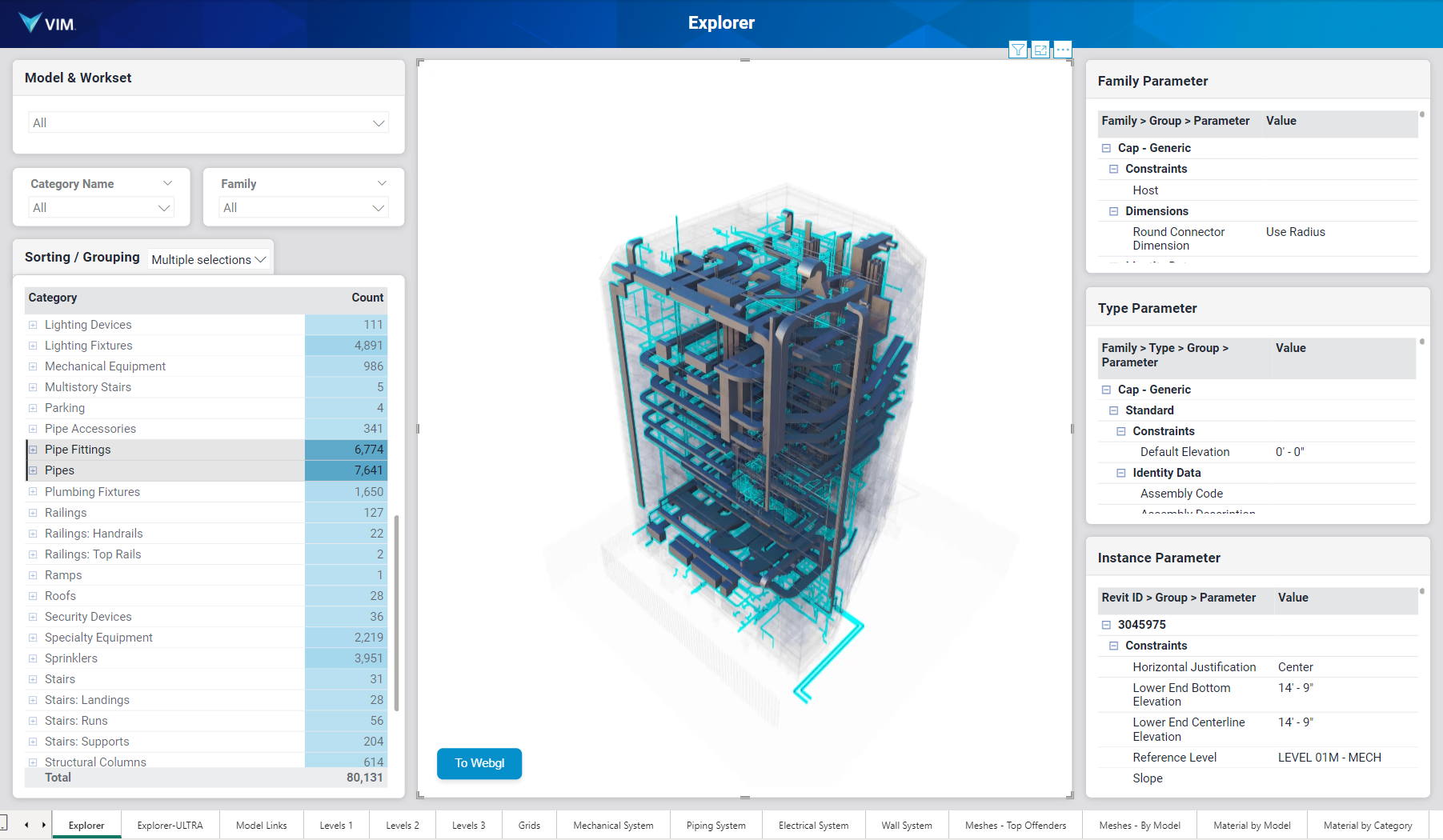Configuring VIM Enterprise Locally
If you do not have access to a Microsoft Azure Storage account, VIM Enterprise can also be run locally using the VIM Ultra renderer to stream the 3D rendered content from a local VIM file to your Power BI reports. A full VIM Enterprise installation using Azure is recommended for larger organizations and allows reports to be shared easily within the organization, while the local configuration is suited for smaller organizations and product trials.
Prerequisites
To use VIM Enterprise locally, you will need:
- A recent graphics card with the latest display drivers installed on your computer (see Minimum Requirements)
- VIM Desktop and VIM Enterprise installed on your computer (download links)
- Power BI Desktop installed on your computer
- SQL Server or SQL Server Express installed on your computer (or available on a local network).
Setup
- In SQL Server or SQL Server Express, create a database for your new project.
- In VIM Enterprise, on the Projects tab, create a new project and configure the source settings.
- Set the Database Connection String to reference the database you created in step 1.
Note: if you are using a local SQL Server Express database, your connection string should look like this (replace the{database_name}with the name of your database)Data Source=localhost\SQLEXPRESS;Initial Catalog={database_name};Integrated Security=SSPI;TrustServerCertificate=True; - Leave the Container Shared Access Signature (SAS) URL field empty. When you run the project, the process to upload the VIM file to Azure Blob Storage will be skipped.
- Scroll to the top of the project settings panel and click Run. When complete, the project Status will say "Done!", and a green checkmark will be displayed beside the project in the projects list.
- Open VIM Desktop and click on the VIM Ultra tab, then click Start.
- Open the sample Power BI report template provided in the VIM Enterprise installer package (BimAudit-RVT-SQLx.x.x-Ux.x.x-DMx.x.x.pbix).
- Ensure Power BI Desktop is configured for improved performance.
- Follow these steps to update the VIM Power BI report template with the data from your database.
- You should now be able to query and visualize your model using VIM Ultra in Power BI.
 You can stop and restart the VIM Ultra rendering process (see step 6 above)
You can stop and restart the VIM Ultra rendering process (see step 6 above)